Last week, Superman discovered a new super-power. Sort of. This ability, which Batman calls “super-flare,” is actually an extension of Clark Kent’s heat-vision, which for many years now has been said to work by directly expelling the solar radiation that empowers his cells and fuels his many abilities. Now, as of Superman #38, the Last Son of Krypton can also unleash ALL of his solar reserves in one destructive blast. Along with devastating anything within a mile of him, it leaves the hero powerless for about twenty-four hours (and it takes even longer to get back to full strength).
I like this power (although I prefer “solar flare,” as “super-flare” sounds more like an epic dance move). I think it makes sense as an extension of heat-vision and delivers new dramatic ground to explore. But I’ve seen several articles and heard several people say this power is a way to “fix” Superman and his stories. The argument is that you need a new way to depower him because he’s still just too powerful to be very interesting, even though he can be hurt by Kryptonite, magic, certain forms of radiation and energy, a prolonged absence of solar radiation, certain airborne agents, lack of oxygen, telepathy and psychological attacks, microscopic attacks, and enemies who match or surpass his strength level (which accounts for over a dozen folks in the DC Comics Universe). The “too powerful” argument bothers me. Super-flare is a cool idea to explore, but it isn’t the missing ingredient to telling interesting and relevant Superman stories; the bigger trick is to not be embarrassed by the character.
Superman’s abilities have had a few different explanations over the years. His 1938 debut comic, Action Comics #1, said that people of the planet Krypton were a more advanced version of the human race. Clark Kent was a “Man of Tomorrow” compared to Earth people, exhibiting greater strength, speed, agility, and resistance to injury. That was it. No flight, no heat-vision, no freeze breath. When Superman got his own solo title in addition to his adventures in the Action Comics series, we were told his power was also due to Earth having weaker gravity than Krypton. This idea was popularized years earlier in the John Carter stories by Edgar Rice Burroughs, whose title hero was an ageless (possibly immortal) human being who then gained great strength, speed and agility in the environment of the planet Mars, where he became a hero. Superman’s co-creator Jerry Siegel said that he was directly inspired by the science fantasy stories of John Carter of Mars.
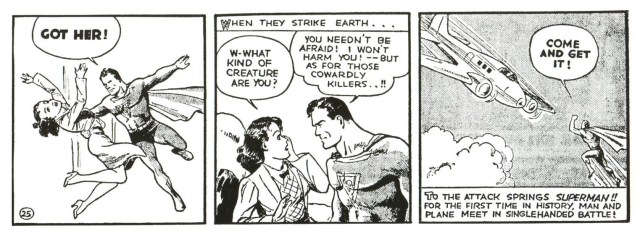 As the years went on, Clark Kent continually grew in power level, number of abilities, and popularity. He appeared in various newspapers, cartoon serials, and a popular national radio program. In the early 1940s, his circulation was over 1,250,000 per month. All of this occurred despite the fact that he was, even then, more powerful than 90% of his enemies and most other superheroes appearing in publication. Some of you might say, “Well, he had Kryptonite, so that must have offered drama.” But the radioactive rock that poisons Superman didn’t show up in the radio show until 1943, and still didn’t appear in the comic books until 1949. This lack of an Achilles’ Heel didn’t keep Superman from being a top seller, however, and it wasn’t just kids who read him.
As the years went on, Clark Kent continually grew in power level, number of abilities, and popularity. He appeared in various newspapers, cartoon serials, and a popular national radio program. In the early 1940s, his circulation was over 1,250,000 per month. All of this occurred despite the fact that he was, even then, more powerful than 90% of his enemies and most other superheroes appearing in publication. Some of you might say, “Well, he had Kryptonite, so that must have offered drama.” But the radioactive rock that poisons Superman didn’t show up in the radio show until 1943, and still didn’t appear in the comic books until 1949. This lack of an Achilles’ Heel didn’t keep Superman from being a top seller, however, and it wasn’t just kids who read him.
What’s more, Superman continued to grow in power even after the introduction of Kryptonite. As the late 1950s brought about the Silver Age of Comics, Superman’s story was revised. The new explanation was that a Kryptonian is powerless on Krypton, under a red sun, but possesses the ability to absorb, store and process radiation from a younger, hotter, yellow sun like that of Earth. As if giving him this near-limitless fuel source weren’t enough, Clark’s costume was reimagined in the Silver Age as being made of natural Kryptonian fibers that also processed solar energy, making the cloth uniform not just colorful but utilitarian. It was lightweight, near-indestructible armor.
This should’ve been too much, right? This should’ve made everyone turn away and say “nope, too powerful.” Instead, Superman’s comics soared into new popularity, bringing new story elements and characters such as his cousin Supergirl, Krypto the Superdog, the Bottle City of Kandor (full of miniaturized Kryptonians), the Fortress of Solitude. We see that during his teenage years, Clark finds acceptance and friendship with the Legion of Super-Heroes, a team of super-powered kids from the 30th century. Clark visits this future era many times before he grows up to become Superman, meaning his optimism and idealism as an adult is not just faith but an informed opinion; he has literally seen what humanity could achieve in a thousand years. If they put the work into it.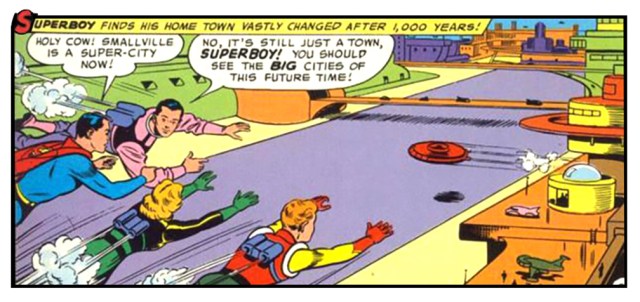
Some people have argued that Superman should go back to the power level he had in the late ’30s and early ’40s, that he was more realistic back then. I get the thinking there, but this is still a skewed perspective. When he showed up in 1938 with those abilities, that was amazing to readers. No one had seen a comic book character like that before. There weren’t other superheroes around who had powers comparable to him in any way, this man who dressed in primary colors, lifted cars and outran trains going at top speed. Readers were enthralled by the impossibility of it and by the fact that this man used his powers to combat evils they themselves feared. The original tagline for Superman was “champion of the oppressed.” He went after not just mad scientists, but corrupt landlords, mobsters, corrupt politicians, and people who attacked women. He advocated altruism and idealism in dark times. He had no patience for cynicism and selfishness and trash-talked enemies with a smile like fellow space cowboy Captain Kirk.
Today, many talk about how goofy Silver Age comics were. Guess what? They were supposed to be silly. They were meant to be fun. No one thought it was high, sophisticated drama when Superman dealt with magical pranksters, fought near-invincible villains who miniaturized cities as a hobby, or met a gorilla who fired Kryptonite radiation from his eyes (why wasn’t all of that in a movie, actually?). Those stories were ridiculous, yes. Some were great and some were poor. But even the poor ones let you know that anything could happen in a Superman comic. It was unapologetic imagination wrapped up in a red cape of science fantasy.
Some of those tales were also more layered when you gave them a second look. An invincible costume that seems like normal cloth echoes myths like Hercules and his impenetrable lion fur cape. Consider the story where Superman finds his father’s “Phantom Zone projector,” which accesses a timeless prison dimension where Krypton’s villains exist as bodiless spirits, echoes of their former selves. Put another way, Superman’s father leaves him a key to Hell. That’s epically nuts! And what about the sad symbolism of Kryptonite? The last literal pieces of Clark’s home, ground that his parents may have walked on, are now poison to him.
To balance out the silly, happy-go-lucky tales, there were also various stories where Superman worries about his friends, faced the possibility of losing a job that he loved, and is frustrated by problems his powers can’t affect. When Clark accidentally causes his adopted brother Mon-El to suffer fatal lead poisoning, he’s guilt-ridden and devastated that his powers can’t magically heal the young man. Clark can only send Mon-El into the timeless Phantom Zone and hope that he finds a cure one day. Even with time travel at his disposal, Clark is never able to undo this mistake, much less prevent other tragedies such as the destruction of Krypton or the deaths of his adopted parents. Like the reader, even Silver Age Superman repeatedly has to accept certain limitations and losses. If he screws up, he screws up and there’s no going back. He has to deal with the consequences. Those stories made him more human than Kryptonite or temporarily losses of powers ever did.
But something happened. Sales fell and there was a growing idea that the Man of Steel didn’t work. There were still some excellent stories such as Elliot S! Maggin’s “Must There Be a Superman?” But many readers no longer saw the hero as a super-powered vigilante with a cowboy swagger who soared through a limitless universe. Instead, he was considered an authority figure trying to maintain a status quo that more and more people protested, someone too powerful and privileged for the average reader to relate to.
There were certainly some comics that helped this impression, as did the memory of the fun but almost alarmingly wholesome 1950s TV show starring George Reeves. As popular as that show was in its day, a later, more cynical generation saw it as more proof of how out of date Clark was. Similarly, Superman’s first two feature films starring Christopher Reeve were well received, but Superman III and Superman IV were unimpressive stories that seemed to satirize the hero as a stiff boy scout. Cute for kids, but too nice, earnest and invulnerable, as well as too lacking in self-awareness, to offer older readers anything of serious value. 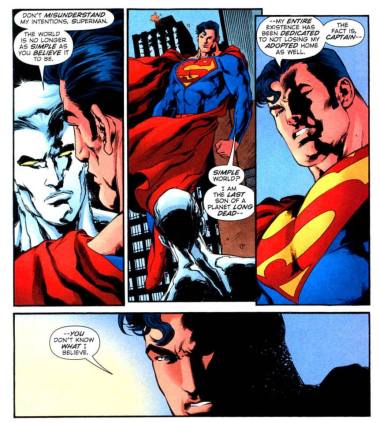 DC’s 50th anniversary crossover, Crisis on Infinite Earths, resulted in the company rebooting its superhero multiverse in 1986. Superman was revamped along with the rest of his reality. His power levels were decreased to more “realistic” and “grounded” levels, while many of the things about him that were deemed too weird or unrealistic were ditched. Interestingly (and oddly), he was now less of a vigilante than he’d ever been, as the “Post-Crisis” Superman is quickly granted legal authority by the Mayor of Metropolis. Some people have said that lowering his powers made all the difference, but even this version of Clark could melt guns by looking at them, lift the QE II without any trouble, and survive a nuclear blast. According to DC’s Who’s Who series, the 1980s Post-Crisis Superman is even strong enough to lift one of the pyramids of Egypt above his head (if you could do that sort of thing without breaking them in the process). Doesn’t that still make him god-like compared to any reader? Is that power level really so much more “realistic” than his previous incarnation?
DC’s 50th anniversary crossover, Crisis on Infinite Earths, resulted in the company rebooting its superhero multiverse in 1986. Superman was revamped along with the rest of his reality. His power levels were decreased to more “realistic” and “grounded” levels, while many of the things about him that were deemed too weird or unrealistic were ditched. Interestingly (and oddly), he was now less of a vigilante than he’d ever been, as the “Post-Crisis” Superman is quickly granted legal authority by the Mayor of Metropolis. Some people have said that lowering his powers made all the difference, but even this version of Clark could melt guns by looking at them, lift the QE II without any trouble, and survive a nuclear blast. According to DC’s Who’s Who series, the 1980s Post-Crisis Superman is even strong enough to lift one of the pyramids of Egypt above his head (if you could do that sort of thing without breaking them in the process). Doesn’t that still make him god-like compared to any reader? Is that power level really so much more “realistic” than his previous incarnation?
In any event, the revision worked in gaining new reader interest and giving the character a much needed shake-up. Slowly, DC reintroduced elements such as the Fortress and the Bottle City of Kandor, now in new forms. But sales weren’t what they could have been and DC once again concerned itself with Superman’s powers. Multiple stories in the ’80s and ’90s featured him temporarily losing his abilities. One story arc brought him back to Pre-Crisis power levels, but had Superman suffer a painful mutation as a result, as if telling us we shouldn’t dare want him to be as he used to be, not if we really liked him.
For a year, Clark even got a new enery-based costume and power set so that readers would see him struggle to adapt and relearn how to be formidable. Not a bad idea, but the storyline didn’t wind up striking a chord for a lot of folks. In fact, some (including myself) would say that the best story from the “Electric Superman” era was a JLA story by Grant Morrison and Howard Porter where the Man of Tomorrow figures out how to use his new powers to move Earth’s moon, and then literally wrestles a renegade angel in the streets of San Francisco. Because screw your realistic power expectations, that’s amazing!
It didn’t stop with the ’90s. To this day, it often feels like DC and/or the public see Superman’s power (added with his niceness) as his biggest hurdle. According to screenwriter/producer David Goyer, it was decided it would make Man of Steel more grounded (almost literally) if Superman couldn’t fly all the way to the moon under his own power. In the New 52 comic Superman Annual #1, published in 2012, we saw Clark talk about how he prefers walking and subway travel because flying makes him feel alien and isolated. Superman doesn’t enjoy flying? No. Sorry, that doesn’t work. That’s his most visual and arguably coolest power. Don’t make him, or us, embarrassed by it. Flying is when he’s free. It’s him enjoying something he was truly born to do.
I can see the appeal of bringing Superman’s power level down a bit. I personally think that Superman: The Animated Series hit a nice a nice level where a lightning bolt would definitely hurt even if it didn’t kill. But when that becomes the main focus, you are really missing what makes the story, and overcompensating when you don’t have to. Because guess what? A lot of superheroes are more powerful than many of the people they encounter in their lives. Entire teams of assassins and soldiers have no hope against Wolverine. New York’s gangs never seem to overpower Spider-Man, who can bench-press 10 tons, leap 30 feet in the air, and possesses a psychic alarm that guides him away from danger. Batman is smarter, richer and a better fighter than 90% of the people he meets. That makes him more powerful than them.
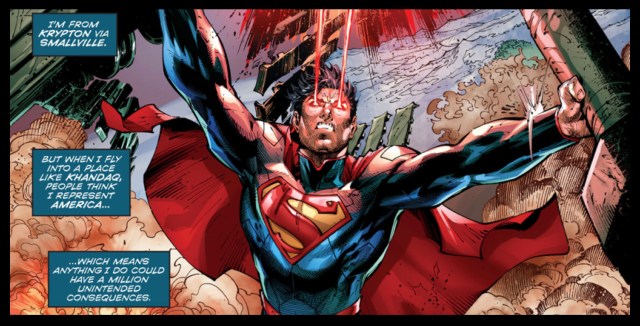
Altering the cloth costume to look like literal armor and taking away the “sillier” aspects of Clark’s life isn’t a real solution either. The fairy tale-like aspects of Superman, as well as his attitude, help him stand out from others. You shouldn’t turn Superman into Batman with powers or make him a more invincible Spider-Man. Celebrate their differences and don’t focus on the powers so much; that’s just the surface level. The Flash and Invisible Woman should be able to punch out most people they fight before the baddies even know a fight’s about to happen. But rather than complain every time this doesn’t happen, many still enjoy their adventures and applaud their heart and fun. Television audiences respond favorably to the Flash’s enthusiasm, as well as when he uses his creative intelligence rather than simply solving things with speed.
Focus on the character and the drama of what Clark Kent tries to represent. The very first Superman story was a two-part tale where he convinces a war profiteer to change his ways by having him enlist, go to a battlefield and see what war truly is. Watching a character who believes it is better to redeem sometimes than punish does not automatically make him less interesting than the characters who act out of vengeance. Superman being a nice guy is not less realistic than the fact that he’s an alien. It isn’t boring to have a story about an ethical person fighting for his principles in a world that doesn’t appreciate their ethics. Greg Pak and Scott Snyder have both been doing great jobs with Superman recently, tackling moral and political issues in exciting ways, delving into what it’s like to perceive Earth when you have super-senses at your disposal. Neither of them had to first make Clark less powerful to ensure their stories would work.
In All-Star Superman, Grant Morrison made Clark more powerful than he’d been since the 1960s and not only did the story not suffer, it’s often hailed as one of the best Superman stories done. Because he loves Superman and showed us why. One take on the origin is Superman: Birthright by Mark Waid with art by Leinil Francis Yu, which doesn’t feature super-villains but focuses on Clark struggling to find his path, figuring out the best way to use his powers, and dealing with staying true to yourself even when the world tells you that you’re wrong. In Smallville Season 11, Bryan Q. Miller’s love for Superman has fueled years of heartfelt, imaginative stories where the Man of Steel banters with his love and partner in heroism Lois Lane (who absolutely knows who he really is), reacts to other heroes with curiosity rather than anger, and often solves problems with intelligence and words.
Good isn’t perfect, but it’s still good. Superman is a good man and a powerful one. In these days where privilege and power are so often discussed and debated, how wonderful to see that Clark Kent recognizes the privilege his powers and life have provided, and says to the world, “Let’s help each other.” He’s not just our hero. We’re his. He loves us. Not unconditionally, but he does love us. If he didn’t, he could just leave Earth and find another planet. After all, he’s Superman.
I like the new power and that it’s one Superman should only use sparingly, being very dangerous and requiring sacrifice. Geoff Johns loves Superman and gave him an interesting new element that can inspire new stories. That’s great. But don’t tell yourself that this is the key that may finally make him interesting again. He’s already had the right ingredients for that since his creation. He can see radio waves and atoms. He is constantly in awe of the world, perceiving colors around living things, colors that no one else has a name for. He’s an immigrant from the stars who was raised right, who wants to help us and show us a better way, who knows the universe is sometimes harsh but thinks the journey is worth it, who loves us and thinks we are stronger and better than we think we are. We just have to remember to use him creatively and enjoy him for who he is, flaws and all.
Alan Kistler (@SizzlerKistler) is the New York Times Best Selling author of Doctor Who: A History. He is a geek consultant, writer and actor who hops between New York City and Los Angeles. He regularly speaks on the history of superheroes and science fiction, as well as representation and feminism in pop culture. He very simply loves superheroes.
Are you following The Mary Sue on Twitter, Facebook, Tumblr, Pinterest, & Google +?



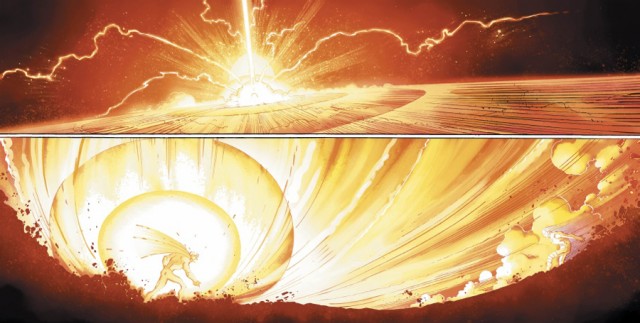
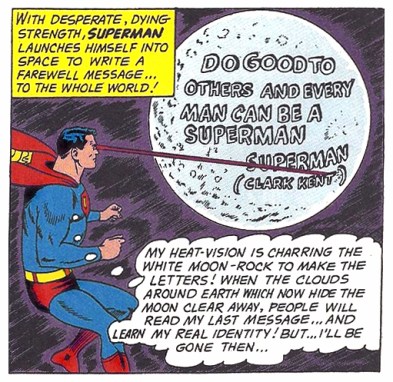
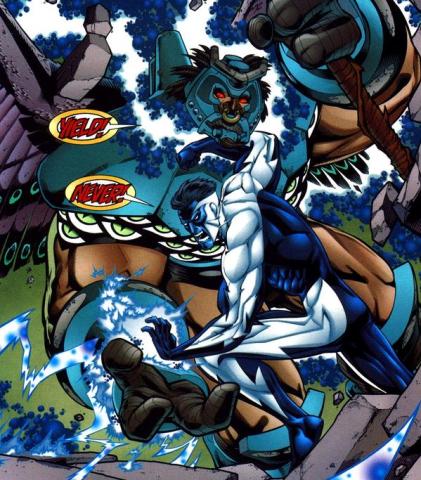
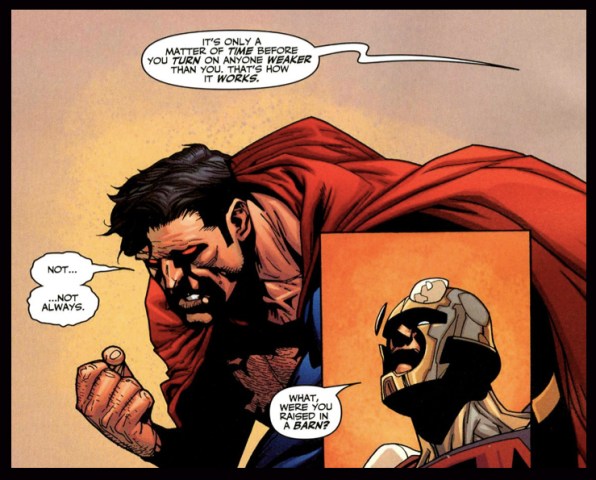
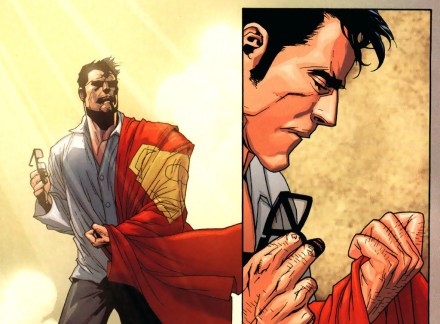





Published: Feb 12, 2015 10:00 am